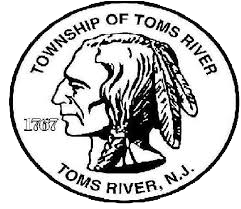About The Project
Ocean County, in partnership with Toms River Township, conducted an LCD study to develop conceptual infrastructure improvements that address existing safety and operational issues while providing capacity for planned re-development of the waterfront area in Toms River. The project goals include but are not limited to, improving bicycle and pedestrian accessibility, accommodating existing and future multimodal transportation networks, promoting redevelopment, and mitigating impacts of future storm events.
The LCD study is the first step of the project development process. The process included the following: evaluation of existing conditions; development of a Purpose and Need Statement; fulfillment of an Alternatives Analysis; and selection of a Preliminary Preferred Alternative. Community participation and stakeholder coordination is integral throughout all stages of the study. Throughout the process, local officials, community stakeholders and the public had an opportunity to provide comments and questions for consideration. Please see the section below for more details on the finished study.
- Project Kick-off (April 2020)
- Data Collection (Spring/Summer 2020): Review existing documentation, mapping and surveying, cultural resource report, etc.
- Purpose and Needs Statement Developed (Summer 2020)
- Alternative Analysis (Winter 2020): Develop engineering alternatives and conduct impact assessment of alternatives
- Selection of Preliminary Preferred Alternative (Fall/Winter 2020)
- Documentation (Late 2020/Early 2021): Prepare cost estimates, NEPA classification and documentation, preliminary engineering next steps, etc.
- Draft Local Concept Development Report (Spring 2021)
- Final Local Concept Development Report (Spring 2021)
Location: Toms River Township
About the Project:
In June of 2016, Toms River completed their Downtown Circulation Neighborhood Plan (Neighborhood Plan). The purpose of the Neighborhood Plan was to evaluate traffic and circulation issues affecting Downtown Toms River. From the analysis that was completed the plan identified a number of existing issues and identified potential improvements to mitigated the existing issues while also providing for redevelopment of the waterfront area. Ocean County has completed several studies and projects in the area including operation analysis and re-timing of intersection along Water Street (2018) and a Road Safety Audit (2019) of Water Street between the Garden State Parkway and Washington Street.
The purpose of this project is to build off of the work that was completed by Toms River and Ocean County in order to develop conceptual infrastructure improvements that address existing safety and operational issues while providing capacity for planned redevelopment of the waterfront area in Toms River.
Step 1 – Evaluate Existing Conditions
Data on existing conditions, including bridge condition, traffic conditions, crash data, local demographics and environmental information will be collected to help aid in the development of the study’s purpose and need, as well as the project’s goals and objectives.
Step 2 – Develop Purpose and Need Statement
A Purpose and Need statement will be developed early in the project development process. This statement outlines goals and objectives that should be included as part of a successful solution to the problem and sets the stage for the development of alternatives.
Step 3 – Develop an Alternatives Analysis
During the Alternatives Analysis process, a range of alternatives will be developed and evaluated to ensure that all options have been considered before selection of the Preliminary Preferred Alternative (PPA). The intention of Alternatives Analysis is to satisfy the identified project objectives while minimizing impacts to environmental features, right-of-way (ROW), and utilities. The conceptual alternatives may include a “No-Build” alternative, rehabilitation alternative or full replacement alternative.
Step 4 – Select a Preliminary Preferred Alternative (PPA)
A PPA will be recommended based on data collect during public outreach, existing conditions, environmental screening, constructability, anticipated impacts and estimated construction costs. A conceptual plan for the PPA will be developed for the final Concept Development Report. Once a PPA is recommended with resolution of support by Toms River Township and the County, and with concurrence from the Inter-Agency Review Committee (IRC), the project will advance to the Local Preliminary Engineering phase of project development.
Federally funded projects require an environmental screening that follows the National Environmental Policy Act (NEPA) process. The NEPA process enables the project sponsor to identify the existing socioeconomic and environmental conditions in the study area and weigh the potential impacts that may be caused by the range of alternatives under consideration. Federal and state regulations require a careful assessment of potential environmental impacts and identification of mitigation or avoidance strategies that may be considered. Environmental resources include air, noise, hazardous or contaminated sites, parks, wetlands, water resources, ecological resources, threatened and endangered species, social and economic impacts and cultural resources such as historic structures and facilities.
Local officials, community stakeholders, agency representatives and the public will have an opportunity to provide comments and questions for consideration throughout the study. The primary tasks of stakeholders include the following:
- Assist in the development of the Project Purpose and Need statement
- Assist in the development of conceptual alternatives
- Assist in the recommendation of the Preliminary Preferred Alternative (PPA), based on the Project Purpose and Need
- Learn more about Community Outreach
The LCD Study is the first phase for federally funded transportation improvement projects. The USDOT’s BUILD Transportation Discretionary Grants program provides funding that will be used to fund subsequent phases of the project.
This preparation involves completing the multi-step Project Delivery. This process is designed to streamline project development and provide a common and consistent framework for federally funded projects at the local, regional and state level.
BUILD Grant Project Delivery
The LCD Study is the first phase for federally funded transportation improvement projects. The USDOT’s BUILD Transportation Discretionary Grants program provides funding that will be used to fund subsequent phases of the project.
This preparation involves completing the multi-step Project Delivery. This process is designed to streamline project development and provide a common and consistent framework for federally funded projects at the local, regional and state level.
BUILD Grant Project Delivery Process
| 1. Local Concept Development |
|---|
|
| 2. Local Preliminary Engineering |
|---|
|
| 3. Final Design/ROW Acquisition |
|---|
|
| 4. Construction |
|---|
|




